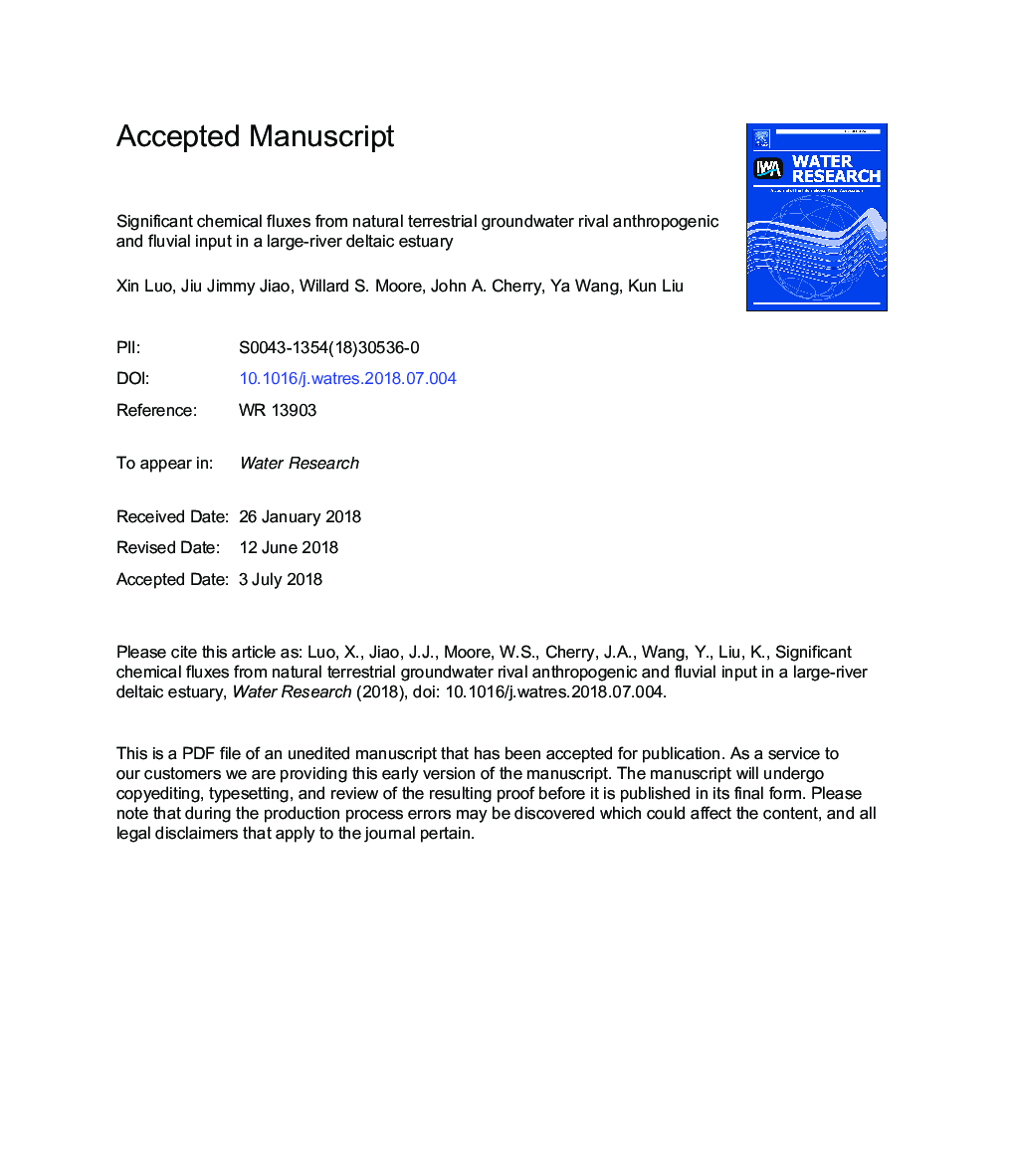| Article ID | Journal | Published Year | Pages | File Type |
|---|---|---|---|---|
| 8873433 | Water Research | 2018 | 42 Pages |
Abstract
The shores of the Pearl River estuary are home to 35 million people. Their wastes are discharged into the large river delta-front estuary (LDE), one of the most highly polluted systems in the world. Here we construct a radium reactive transport model to estimate the terrestrial groundwater discharge (TGD) into the highly urbanized Pearl River LDE. We find the TGD comprises only approximately 0.9% in term of water discharge compared to the river discharge. The TGD in the Pearl River LDE delivers significant chemical fluxes to the coast, which are comparable to the fluvial loadings from Pearl River and other world major rivers. Of particular importance is the flux of ammonium because of its considerable role in Pearl River estuary eutrophication and hypoxia. Unlike the ammonium in many other aquifers, the ammonium in the Pearl River aquifer system is natural and originated from organic matter remineralization by sulfate reduction in the extremely reducing environment. The TGD derived NH4+ is as much as 5% of the upstream Pearl River fluvial loading and 42% of the anthropogenic inputs. This high groundwater NH4+ flux may greatly intensify the eutrophication, shift the trophic states, and lead to alarming hypoxia within the affected ecosystems in the Pearl River LDE. The large TGD derived chemical fluxes will lead to deterioration of water and will potentially affect human health.
Related Topics
Physical Sciences and Engineering
Earth and Planetary Sciences
Earth-Surface Processes
Authors
Xin Luo, Jiu Jimmy Jiao, Willard S. Moore, John A. Cherry, Ya Wang, Kun Liu,
